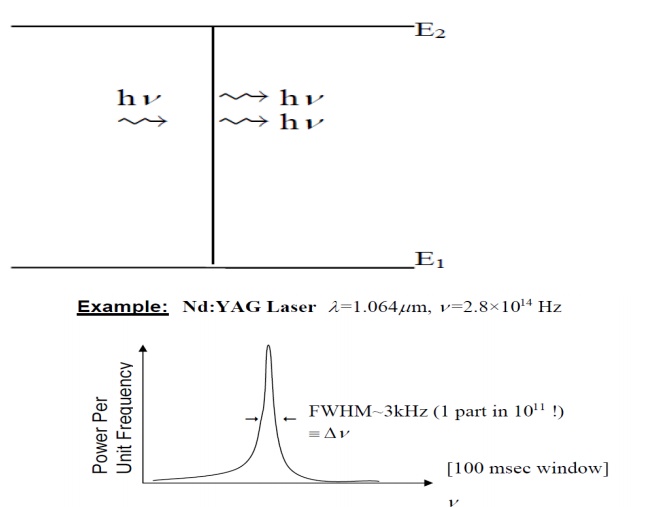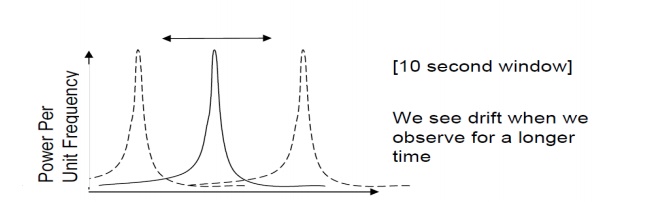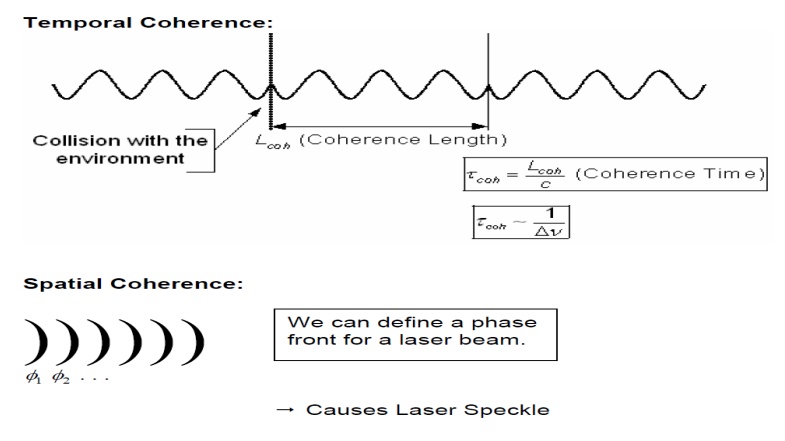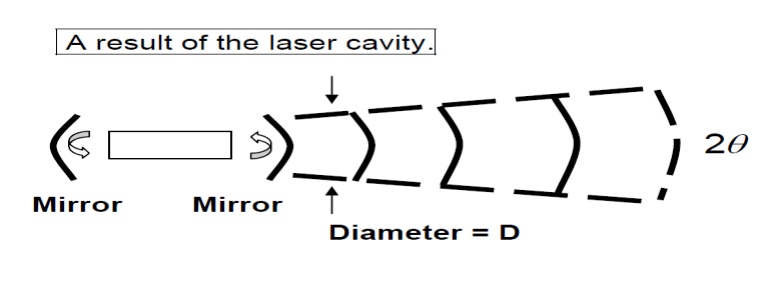Chapter: Fiber optics and Laser instruments : Laser Fundamentals
Properties of Laser
Properties of Laser
1. Monochromaticity:
This
property is due to the following two factors.
First,
only an EM wave of frequency n0= (E2-E1)/h can be amplified, n0has a certain
range which is called linewidth, this linewidth is decided by homogeneous
broadening factors and inhomogeneous broadening factors, the result linewidth
is very small compared with normal lights. Second, the laser cavity forms a
resonant system, oscillation can occur only at the resonance frequencies of
this cavity. This leads to the further narrowing of the laser linewidth, the
narrowing can be as large as 10 orders of magnitude! So laser light is usually
very pure in wavelength, we say it has the property of monochromaticity.


2. Coherence:
For any
EM wave, there are two kinds of coherence, namely spatial and temporal
coherence.
Let’s consider
two points that, at time t=0, lie on the same wave front of some given EM wave,
the phase difference of EM wave at the two points at time t=0 is k0. If for any
time
t>0
the phase difference of EM wave at the two points remains k0, we say the EM wave
has perfect coherence between the two points. If this is true for any two
points of the wave front, we say the wave has perfect spatial coherence. In
practical the spatial coherence occurs only in a limited area, we say it is
partial spatial coherence.
Now
consider a fixed point on the EM wave front. If at any time the phase
difference between time t and time t+dt remains the same, where "dt"
is the time delay period, we say that the EM wave has temporal coherence over a
time dt. If dt can be any value, we say the EM wave has perfect temporal
coherence. If this happens only in a range 0<dt<t0, we say it has partial
temporal coherence, with a coherence time equal to t0. We emphasize here that
spatial and temporal coherence are independent. A partial temporal coherent
wave can be perfect spatial coherent. Laser light is highly coherent, and this
property has been widely used in measurement, holography, etc.

3.Divergence and Directionality:
Laser
beam is highly directional, which implies laser light is of very small
divergence. This is a direct consequence of the fact that laser beam comes from
the resonant cavity, and only waves propagating along the optical axis can be
sustained in the cavity. The directionality is described by the light beam
divergence angle. Please try the figure below to see the relationship between
divergence and optical systems. For perfect spatial coherent light, a beam of
aperture diameter D will have unavoidable divergence because of diffraction.
From diffraction theory, the divergence angle qd is: qd= b l /D Where l and D
are the wavelength and the diameter o
f the
beam respectively, b is a coefficient whose value is around unity and depends
on the type of light amplitude distribution and the definition of beam diameter.
qd is called diffraction limited divergence. If the beam is partial spatial
coherent , its divergence is bigger than the diffraction limited divergence. In
this case the divergence becomes:
q = b l
/(Sc)1/2
whereSc
is the coherence area.

4. Brightness:
The
brightness of a light source is defined as the power emitted per unit surface
area per unit solid angle. A laser beam of power P, with a circular beam cross
section of diameter D and a divergence angle q and the result emission solid
angle is p q 2, then the brightness of laser beam is:
B=4P/(p
Dq )2
The max
brightness is reached when the beam is perfect spatial coherent.
Bmax=4P/(p
l b )2
In case
of limited diffraction (q d= l b /D, D=l b /q d, q d=q )
Related Topics